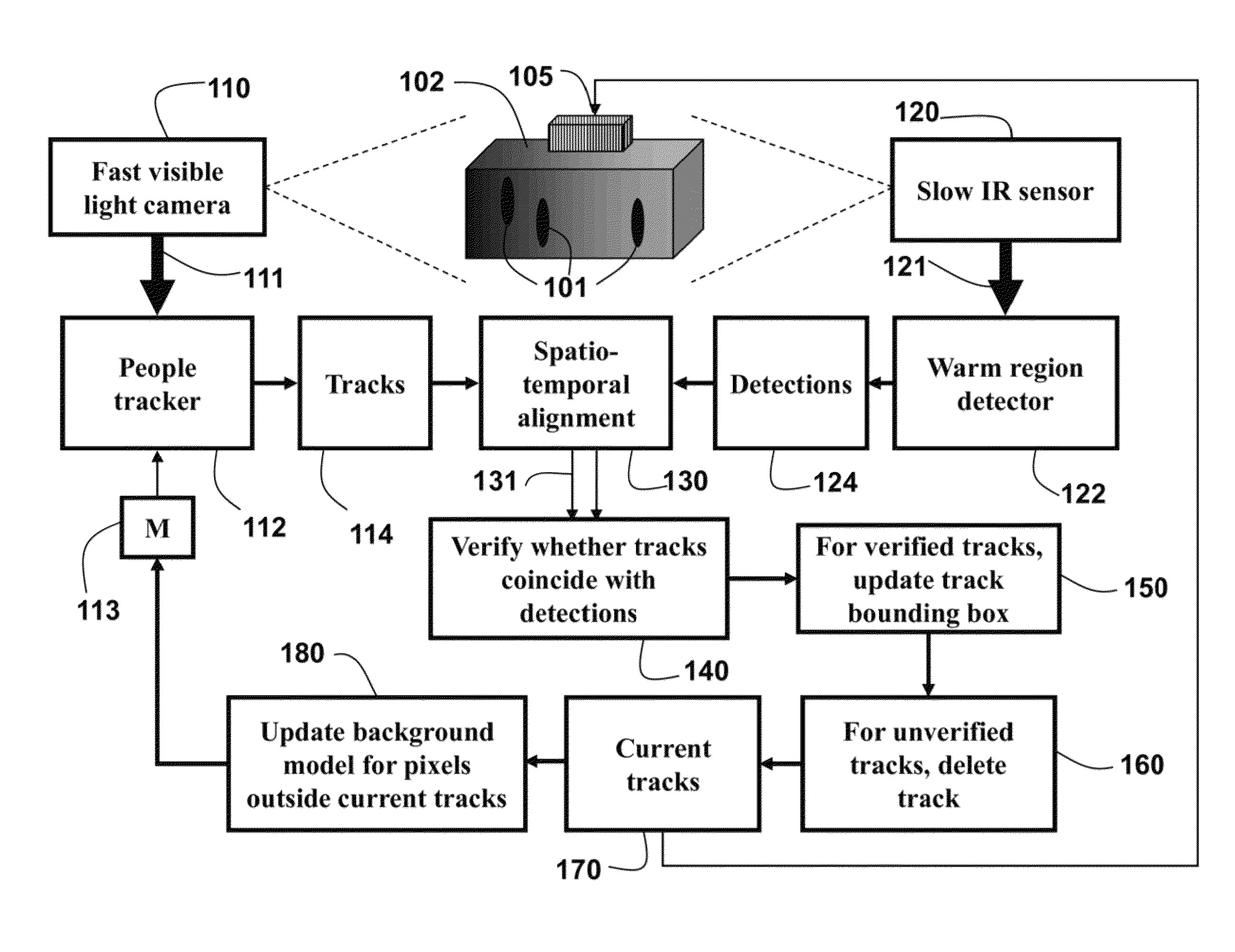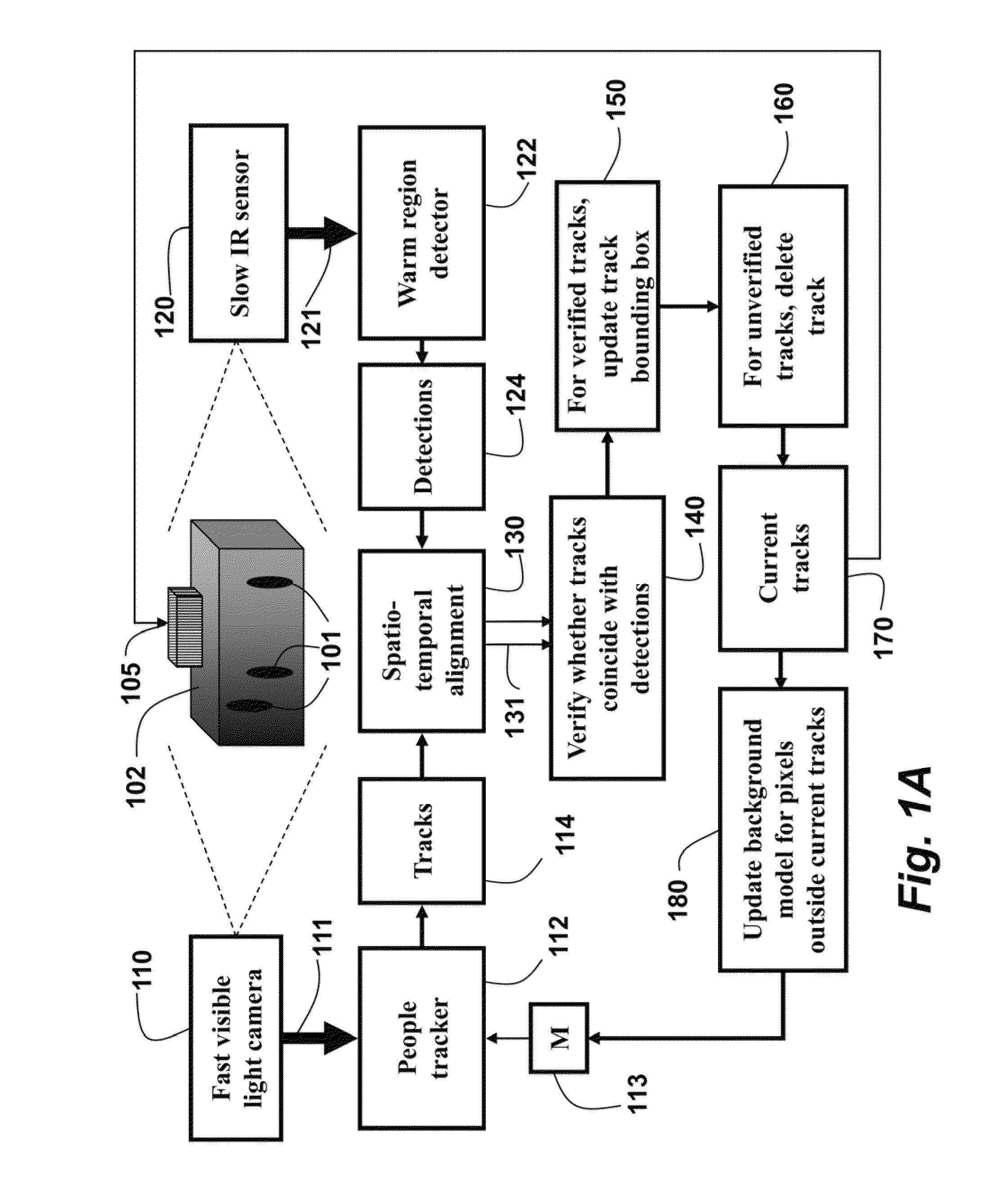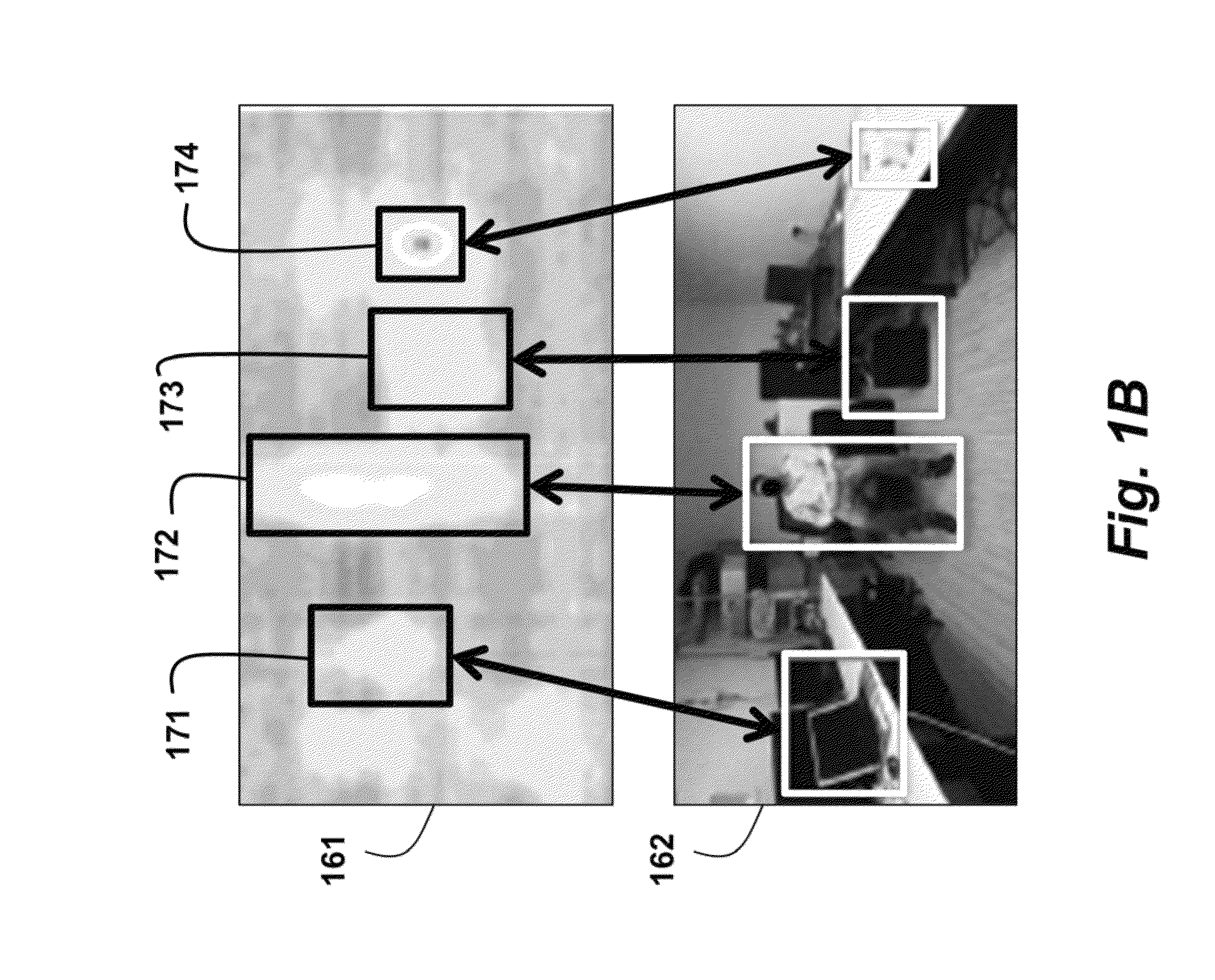Method and system for tracking people in indoor environments using a visible light camera and a low-frame-rate infrared sensor
a technology of infrared sensor and visible light camera, which is applied in the field of computer vision, can solve the problems of inability of sensors to track moving people, problem of ir-only tracking using only ir sensors, etc., and achieve the effect of improving equipment control
- Summary
- Abstract
- Description
- Claims
- Application Information
AI Technical Summary
Benefits of technology
Problems solved by technology
Method used
Image
Examples
Embodiment Construction
[0037]FIG. 1A shows a method and system for detecting and tracking people 101 in an environment 102 according to embodiments of our invention. A first sequence of images 111 of the environment is acquired by a visible-light (RGB) camera 110 having a first frame rate. A second sequence of images 121 of the environment is acquired by an infrared (IR) sensor 120 having a second frame rate. The second frame rate is substantially lower than the first frame rate. In some embodiments, the resolution of images from the IR sensor is much lower than the resolution of images from the RGB camera. In one embodiment, the thermal sensor includes an array of 32 thermal IR receivers arranged in a vertical line, which is partially rotated back and forth 200 by a motor in 94 discrete steps to produce a 140° field-of-view IR image over a time duration of one minute, see FIG. 2A. The RGB camera and the IR sensor are substantially colocated.
[0038]Objects, e.g., people, are tracked 112 in the first sequen...
PUM
 Login to View More
Login to View More Abstract
Description
Claims
Application Information
 Login to View More
Login to View More - R&D
- Intellectual Property
- Life Sciences
- Materials
- Tech Scout
- Unparalleled Data Quality
- Higher Quality Content
- 60% Fewer Hallucinations
Browse by: Latest US Patents, China's latest patents, Technical Efficacy Thesaurus, Application Domain, Technology Topic, Popular Technical Reports.
© 2025 PatSnap. All rights reserved.Legal|Privacy policy|Modern Slavery Act Transparency Statement|Sitemap|About US| Contact US: help@patsnap.com



